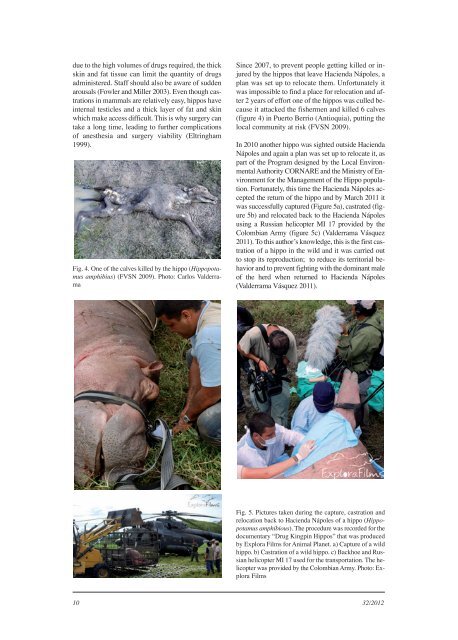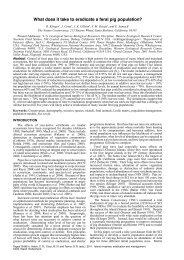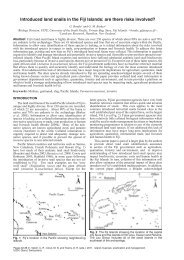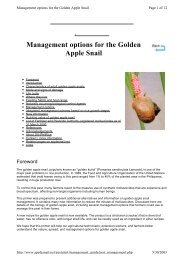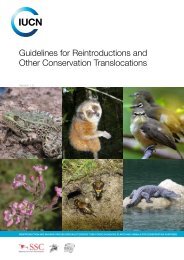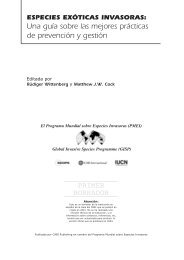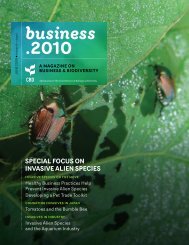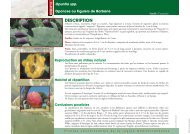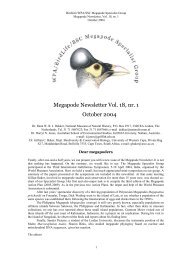Aliens - ISSG
Aliens - ISSG
Aliens - ISSG
You also want an ePaper? Increase the reach of your titles
YUMPU automatically turns print PDFs into web optimized ePapers that Google loves.
due to the high volumes of drugs required, the thick<br />
skin and fat tissue can limit the quantity of drugs<br />
administered. Staff should also be aware of sudden<br />
arousals (Fowler and Miller 2003). Even though castrations<br />
in mammals are relatively easy, hippos have<br />
internal testicles and a thick layer of fat and skin<br />
which make access difficult. This is why surgery can<br />
take a long time, leading to further complications<br />
of anesthesia and surgery viability (Eltringham<br />
1999).<br />
Fig. 4. One of the calves killed by the hippo (Hippopotamus<br />
amphibius) (FVSN 2009). Photo: Carlos Valderrama<br />
Since 2007, to prevent people getting killed or injured<br />
by the hippos that leave Hacienda Nápoles, a<br />
plan was set up to relocate them. Unfortunately it<br />
was impossible to find a place for relocation and after<br />
2 years of effort one of the hippos was culled because<br />
it attacked the fishermen and killed 6 calves<br />
(figure 4) in Puerto Berrio (Antioquia), putting the<br />
local community at risk (FVSN 2009).<br />
In 2010 another hippo was sighted outside Hacienda<br />
Nápoles and again a plan was set up to relocate it, as<br />
part of the Program designed by the Local Environmental<br />
Authority CORNARE and the Ministry of Environment<br />
for the Management of the Hippo population.<br />
Fortunately, this time the Hacienda Nápoles accepted<br />
the return of the hippo and by March 2011 it<br />
was successfully captured (Figure 5a), castrated (figure<br />
5b) and relocated back to the Hacienda Nápoles<br />
using a Russian helicopter MI 17 provided by the<br />
Colombian Army (figure 5c) (Valderrama Vásquez<br />
2011). To this author’s knowledge, this is the first castration<br />
of a hippo in the wild and it was carried out<br />
to stop its reproduction; to reduce its territorial behavior<br />
and to prevent fighting with the dominant male<br />
of the herd when returned to Hacienda Nápoles<br />
(Valderrama Vásquez 2011).<br />
Fig. 5. Pictures taken during the capture, castration and<br />
relocation back to Hacienda Nápoles of a hippo (Hippopotamus<br />
amphibious). The procedure was recorded for the<br />
documentary “Drug Kingpin Hippos” that was produced<br />
by Explora Films for Animal Planet. a) Capture of a wild<br />
hippo. b) Castration of a wild hippo. c) Backhoe and Russian<br />
helicopter MI 17 used for the transportation. The helicopter<br />
was provided by the Colombian Army. Photo: Explora<br />
Films<br />
10 32/2012


